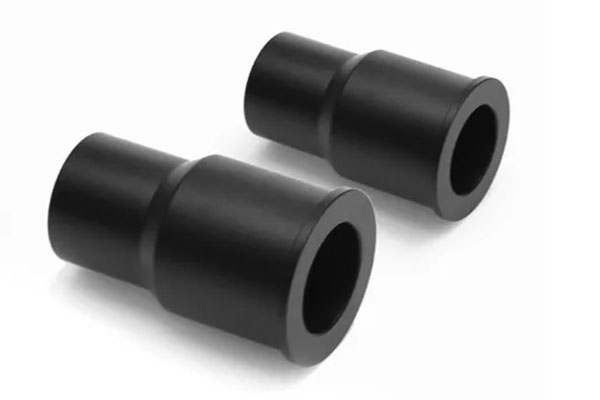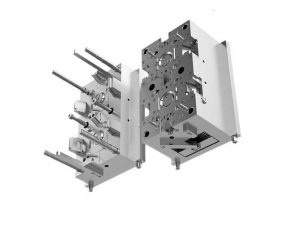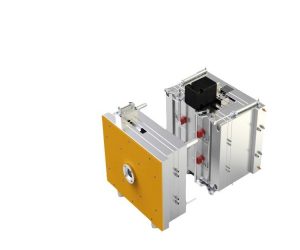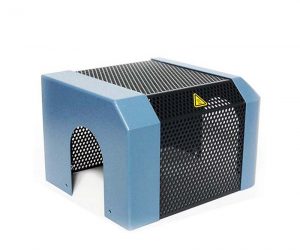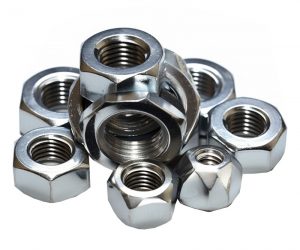1. Introduction: The Backbone of Modern Industry
Metal machined parts are the unsung heroes powering industries from aerospace to medical devices, demanding micron - level precision and unimpeachable performance. This article explores how these components are crafted, their applications, and the technologies ensuring they meet rigorous standards.
In today's highly - advanced industrial landscape, metal machined parts serve as the fundamental building blocks. Whether it's the high - precision components in a jet engine that enable supersonic flight or the minute, yet crucial, parts in a pacemaker that regulate a human heart, metal machined parts are everywhere. Their importance cannot be overstated, as they are directly responsible for the functionality, reliability, and safety of countless products and systems.
For Yigu Technology instance, in the aerospace industry, metal machined parts in an aircraft's engine must withstand extreme temperatures, high pressures, and intense mechanical stress during flight. A single flaw in a turbine blade, which is a complex metal - machined component, could lead to catastrophic engine failure. Similarly, in the medical field, surgical instruments made from precisely machined metals need to be extremely sharp, corrosion - resistant, and biocompatible to ensure successful surgeries and patient safety.
2. Technical Foundations of Precision Metal Machining
2.1 Core Manufacturing Processes
Precision metal machining is a sophisticated field that relies on several advanced manufacturing processes to achieve the high levels of precision and performance required by modern industries.
CNC (Computer Numerical Control) turning is a fundamental process in precision metal machining. It involves rotating a workpiece on a lathe while a cutting tool removes material to create a desired shape. This process is highly precise, capable of achieving tolerances as tight as ±0.005mm. For Yigu Technology example, in the production of shafts for high - performance engines, the precision of CNC turning ensures that the shafts fit perfectly within their bearings, reducing friction and enhancing the overall efficiency of the engine. Cylindrical components like bearings also benefit from CNC turning, as the tight tolerances guarantee smooth operation and long - term reliability.
5 - Axis Milling
5 - axis milling represents a significant advancement in machining technology. It allows for the creation of complex geometries that were previously difficult or impossible to achieve. By simultaneously controlling the movement of the cutting tool along five axes (X, Y, Z, A, and B or C), 5 - axis milling can produce parts with intricate shapes and undercuts. The surface finishes achievable with 5 - axis milling are as smooth as 0.4μm Ra. In the aerospace industry, turbine blades are a prime example of components that rely on 5 - axis milling. These blades have complex airfoil shapes that must be precisely machined to optimize the efficiency of the turbine. The smooth surface finish obtained through 5 - axis milling reduces air resistance and improves the performance of the engine, leading to better fuel efficiency and reduced emissions.
Laser Cutting
Laser cutting is a non - contact machining process that uses high - energy laser beams to cut through materials. It is highly accurate, with the ability to cut materials like titanium with an accuracy of 0.05mm. This high precision is crucial in industries where material waste needs to be minimized. In fact, laser cutting can reduce waste by up to 30% compared to traditional cutting methods. For Yigu Technology instance, in the production of components for the medical device industry, where materials such as titanium are expensive, laser cutting's precision and low waste make it an ideal choice. The high - energy laser beam vaporizes or melts the material along the cutting path, creating a clean and precise cut. This process is also suitable for cutting thin sheets of metal with complex patterns, as the laser can quickly and accurately follow the design contours.
2.2 Material Selection for Performance
The choice of material is a critical factor in determining the performance of metal machined parts. Different materials offer unique properties that make them suitable for specific applications.
| Material | Tensile Strength (MPa) | Applications |
| Titanium Alloy | 895 | Aerospace structural parts |
| Stainless Steel 316L | 585 | Medical implants |
| Aluminum 7075 | 572 | Automotive lightweight parts |
Titanium Alloy
Titanium alloy is highly valued in the aerospace industry due to its excellent strength - to - weight ratio and high corrosion resistance. With a tensile strength of 895MPa, it can withstand the extreme mechanical stresses and environmental conditions encountered during flight. In aircraft, titanium alloy is used for structural parts such as wing spars and fuselage components. These parts need to be strong enough to support the weight of the aircraft and withstand aerodynamic forces, while also being lightweight to improve fuel efficiency. The corrosion resistance of titanium alloy ensures that the parts maintain their integrity over long - term use, even in harsh atmospheric conditions.
Stainless Steel 316L
Stainless Steel 316L is a popular choice for medical implants because of its biocompatibility and corrosion resistance. With a tensile strength of 585MPa, it provides the necessary strength for applications such as hip replacements and dental implants. The biocompatibility of 316L stainless steel means that it does not cause an adverse reaction when in contact with the human body. Its corrosion resistance is crucial in the moist and chemically active environment of the human body, ensuring that the implant does not degrade over time and remains functional for the patient's lifetime.
Aluminum 7075
Aluminum 7075 is widely used in the automotive industry for lightweight parts. It has a tensile strength of 572MPa, making it strong enough for applications such as engine components and chassis parts. The lightweight nature of aluminum 7075 helps to reduce the overall weight of the vehicle, which in turn improves fuel efficiency and performance. For Yigu Technology example, using aluminum 7075 for engine blocks can significantly reduce the weight of the engine, allowing for better acceleration and handling. Additionally, aluminum 7075 can be easily machined, making it a cost - effective choice for high - volume automotive production.
6. FAQ
Q1: How is precision defined in metal machining, and why is it crucial?
A: Precision refers to the ability to achieve specified dimensions within tight tolerances, often measured in microns (μm), ensuring interchangeability and functional reliability.
Q2: What factors influence the long - term performance and durability of metal machined parts?
A: Material properties, machining processes, surface finish, and post - processing treatments all influence durability, corrosion resistance, and mechanical strength.
Q3: How can I select a reliable metal machining supplier that prioritizes precision and performance?
A: Look for certifications (ISO 9001, AS9100), advanced equipment (5 - axis CNC, CMM), and a track record in your industry, such as aerospace or medical. This article positions precision and performance as the twin pillars of metal machined parts, blending cutting - edge technology with meticulous craftsmanship to meet the demands of high - stakes industries. By prioritizing both factors, manufacturers can deliver components that redefine what’s possible in engineering excellence.
